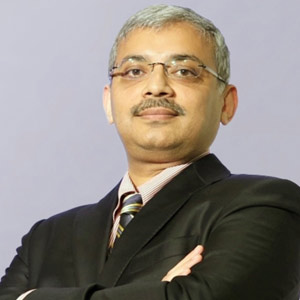THANK YOU FOR SUBSCRIBING

Moving into the Digital Era of Infrastructure Design and Build
Louise Adams, Chief Operating Officer, Aurecon


Louise Adams, Chief Operating Officer, Aurecon
Continuing private sector and government investment in infrastructure will determine how fast the Asia Pacific region can adopt further advances in digitization. Construction, as one of the least digitized sectors in the global economy, is ripe for disruption. The global COVID-19 pandemic may just prove to be the stimulus the sector needed as it has forced to use digital technology to ensure the safety of workers and boost productivity.
Despite being slow to embrace the benefits of digitization, there are pockets of existing advancement. Notable examples include building information modeling for design (BIM), virtual reality simulations for community engagement, and 3D printing for prototyping.
Factors characterizing much deeper digital enablement on projects include shifting the mindsets of the past, deciphering the complexities of supply chains, and mitigating the perceived risks of change.
Addressing these factors ensures the ability of the sector to entrench digitization into each moment in the supply chain, from planning, design, and manufacture, to asset construction, maintenance, and closure.
Towards Digitization
Advancements in construction methodologies have always driven the sector forward. We’re now able to build taller, stronger, longer, and more energy-efficient public and private infrastructure than we could 50 years ago.
This is the same for digitization. It marks a shift away from traditional analog practices, bringing about a better understanding of impacts, costs, and outcomes.
Such approaches have emerged in other sectors, for example, Boeing now uses predictive asset performance modeling to determine when an aircraft’s engine will need replacing in the future.
Even the simplest commercial building project today requires a multitude of software platforms to communicate and connect stakeholders. As projects become larger, or more complex, precision and speed of information delivery and data collection become even more important.
The use of digital twins, artificial intelligence, and advanced analytics makes the data collection process more efficient and centralizes data for global visibility. A single piece of infrastructure can be brought to life before its built. Communities can walk through a building in a virtual reality simulation and provide instant feedback. If the orientation or design of an infrastructure asset needs to change, this can be done in the virtual stratosphere before the budget is expended on more designing and digging.
But, the key to this is using data in the right way.
Commonly, individual companies develop their own bespoke digital tools. The result is a proliferation of subscale solutions that send out small ripples of change.
Factors characterizing much deeper digital enablement on projects include shifting the mindsets of the past, deciphering the complexities of supply chains, and mitigating the perceived risks of change
This type of transformation turns away from the analog practices of the past with digitization that up-levels businesses, reduces overall costs (and consequently improves profitability), and improves processes and systems for productivity outcomes.
Predict the Unpredictable
If the past 18 months have taught the sector anything, it’s the importance of being prepared for the unexpected.
Critical infrastructure that supports daily life already generates a vast amount of data. Digital technology can connect intelligence with the Internet of Things—sensors, wireless technology—to enable equipment and assets to talk to each other. Then advanced or predictive analytics can help to prevent or minimize equipment breakdowns.
Get better at prediction and prevention and the natural lifecycle of assets improve, along with resilience and productivity, and risks and costs reduce.
Part of this response to unpredictability is data security. There’s a vulnerability to be managed with infrastructure, whether it be a critical defense, water or power asset, or arterial freeway. This is increasingly apparent as the construction industry moves to a more remote and physically distanced workforce. Cyber security should rightfully remain a key focus to insulate the sector from increased threat.
Meeting Community Needs
The construction sector in the Asia Pacific region is bringing to life the foundation of future communities, cities, and civilizations, with infrastructure that connects and supports people.
Tomorrow’s legacy is ignited by the difficult conversations today around the role of digital technology and its profound transformative effect on infrastructure.
The use of digital technology can engage communities by demonstrating how infrastructure is a representation of their needs. This launches a fantastic new way of intelligent communication to undergird community involvement.
But it does require a good deal of open-mindedness to adopt digital ways of designing and building, shifting from a traditional linear process to a more agile circular approach with loops of feedback. Such a change requires a shift in mindset, using digital technology to undertake tasks such as validate designs and look for standardization and consistency. This way of working then provides greater capacity for humans to focus on connection and collaboration, and problem-solving, for which brainpower is irreplaceable.
The Foundation of the Future
Net acceleration in the use of digital technology, and the construction sector will transform from a highly bespoke and fragmented, project-based industry, to a more standardized, consolidated, and integrated one.
The digital awakening in the sector is definitely on its way. Companies and governments now face a choice-watch the opportunities sail by, or embrace the change.
About the author
Louise Adams is Aurecon’s Chief Operating Officer. In 2020, she was named the Australian CEO of the Year, which is part of the CEO Magazine Executive of the Year awards. As one of the few female leaders in the infrastructure industry, Louise understands her responsibilities as a role model for young female scientists and engineers. She has recently been appointed to the Board of Infrastructure Partnerships Australia and is a committee member for Infrastructure Partnerships Australia’s Women’s Infrastructure Network Steering Committee. She is also the Chair to Consult Australia’s Male Champions of Change.












